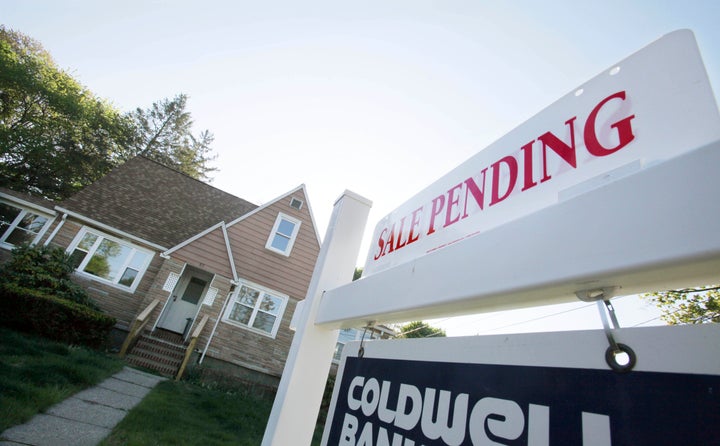
You may have noticed news items that a company called Mortgage Resolution Partners (MRP) is proposing to have strapped localities use the public power of eminent domain to deal with the problem of underwater mortgages.
Officials of San Bernardino County, California, where one home in two is worth less than the value of the mortgage on it, are very interested in the idea. (San Bernardino has just voted to file for bankruptcy). The New York Times' Joe Nocera wrote a favorable column on the proposal, calling it the "last chance" to resolve the mortgage mess.
The idea is to have the county use its power of eminent domain to take these mortgages out of securitized packages of loans, purchase them at a steep discount, write them down to fair market value, and then create a new mortgage with a much reduced principal and monthly payment. MRP puts up the capital to make these purchases. Then MRP makes some money on the deal and the homeowner gets a break on the payments.
But if using eminent domain as a way to address crisis in underwater mortgages is a promising idea, this particular scheme is not. For starters, MRP, a for-profit company, is not proposing to acquire vacant homes or even homes where residents have stopped paying on their mortgages. It wants localities to use eminent domain so that it can acquire performing mortgages.
Who needs MRP as middleman? By skimming off only the best mortgages, it is taking almost none of the risk and stands to reap windfall profits for raising capital and shuffling paper. If the federal government got serious about this concept, it has plenty of resources through its feeble HAMP program to acquire distressed mortgages, reduce the principal to fair market value, and give the homeowner all of the break.
The Times has been treating the use of eminent domain as a new idea for solving the mortgage crisis, and crediting it to the vulture -- I mean venture -- capitalists at MRP.
But Professor Howell Jackson of Harvard Law School has been advocating this approach since 2008, and I urged creation of a new Home Owners Loan Corporation with eminent domain powers in my 2010 book, A Presidency in Peril.
Rep. Brad Miller of California proposed a version of the Home Owners Loan Corporation idea more than two years ago, without new financial industry middlemen. Miller recently criticized the securitization industry for trying to block the MRP proposal, but that doesn't make it the best way to proceed. For a smart technical discussion, see Yves Smith and David Dayen on Firedoglake.
There was money in the 2009 Recovery Act for local governments and non-profits to acquire abandoned and foreclosed homes. The last thing we need is for one more layer of entrepreneurs to skim off the most potentially lucrative layer of distressed mortgages.
A Homeowners Loan Corporation using eminent domain could be a full service solution. It could pull distressed mortgages out of securitized pools, provide principal reductions on both performing mortgages and ones where homeowners are behind on their payments. And it could purchase foreclosed homes at deep discount and convey them to nonprofit groups to be returned to the supply of affordable housing. (In the absence of adequate government action, that function is mostly being performed by speculators, too.) Even without legislation for a new HOLC, the government could use existing entities to perform this role.
Think about it. Once upon a time, in the era of It's A Wonderful Life, before the sharks ruined it for everybody, the business of supplying mortgages was simplicity itself. Nonprofit savings banks and savings and loans provided mortgages. Their money was replenished by the original Federal National Mortgage Association (FNMA) so that they could make mortgages. Very low down-payment mortgages could be had through the GI Bill and FHA. There was no for-profit securitization.
Then the wise guys invented securitization and subprime. At least five layers of middlemen took their cuts. The guy who originated the loan, the guy who took it off his hands, the guy who packaged it and sold mortgage-backed securities, the credit rating firm that gave the package a bogus triple-A rating, and other players who bought and sold the paper for profit. FNMA was privatized as one more dubious actor. And then the show went bust, taking the economy down with it.
How fitting, in this corrupted era, that the supposed savior is now yet another entrepreneur. When are we going to get smart enough to figure out that the whole thing works better when government does its job rather than being the enabler of financial middlemen?
Eminent domain is in the Constitution to serve public purposes. In the 5 to 4 Kelo v. City of New London decision of 2005, the Supreme Court held that a local government could lawfully use eminent domain to condemn a property and convey it to a private developer. But even if constitutional, the use of eminent domain for private profit isn't good policy--even less so when the public sector can do the job more fairly and efficiently.
Until government reclaims its proper role, financial middlemen will keep on creating crises--and then profiting from efforts to resolve them. It's a wonderful life.
Robert Kuttner is co-editor of The American Prospect and a senior fellow at Demos. His latest book is A Presidency in Peril.
